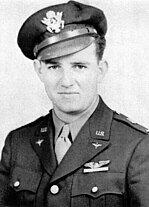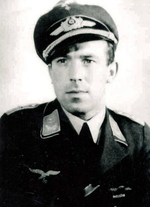This article needs additional citations for verification. (February 2017) |
Charlie Brown (left) and Franz Stigler (right) | |
| Air combat | |
|---|---|
| Date | 20 December 1943 |
| Summary | Fighter pursuit of bomber; enemy fighter escorts bomber to safety |
| Site | Over Germany and German-occupied Europe |
| First aircraft | |
| Type | Boeing B-17F Flying Fortress |
| Operator | United States Army Air Forces (USAAF) |
| Registration | 42-3167 |
| Flight origin | RAF Kimbolton |
| Destination | Bremen, Germany, then return |
| Crew | 10 |
| Fatalities | 1 (tail gunner) |
| Survivors | 9 |
| Second aircraft | |
| Type | Messerschmitt Bf 109G-6 |
| Operator | Luftwaffe |
| Crew | 1 |
| Survivors | 1 |
The Charlie Brown and Franz Stigler incident occurred on 20 December 1943, when, after a successful bomb run on Bremen, 2nd Lt. Charles "Charlie" Brown's B-17F Flying Fortress Ye Olde Pub of the United States Army Air Forces (USAAF) was severely damaged by German fighters. Luftwaffe pilot Franz Stigler had the opportunity to shoot down the crippled bomber but did not do so, and instead escorted it over and past German-occupied territory so as to protect it. After an extensive search by Brown, the two pilots met each other 50 years later and developed a friendship that lasted until Stigler's death in March 2008. Brown died only a few months later, in November of the same year.[1][2]
- ^ Blake, John (9 March 2013). "Two enemies discover a 'higher call' in battle". CNN. Retrieved 19 June 2024.
- ^ "Brown, Charles L." The Miami Herald. 7 December 2008. pp. 4B. Retrieved 19 June 2024 – via Newspapers.com.

